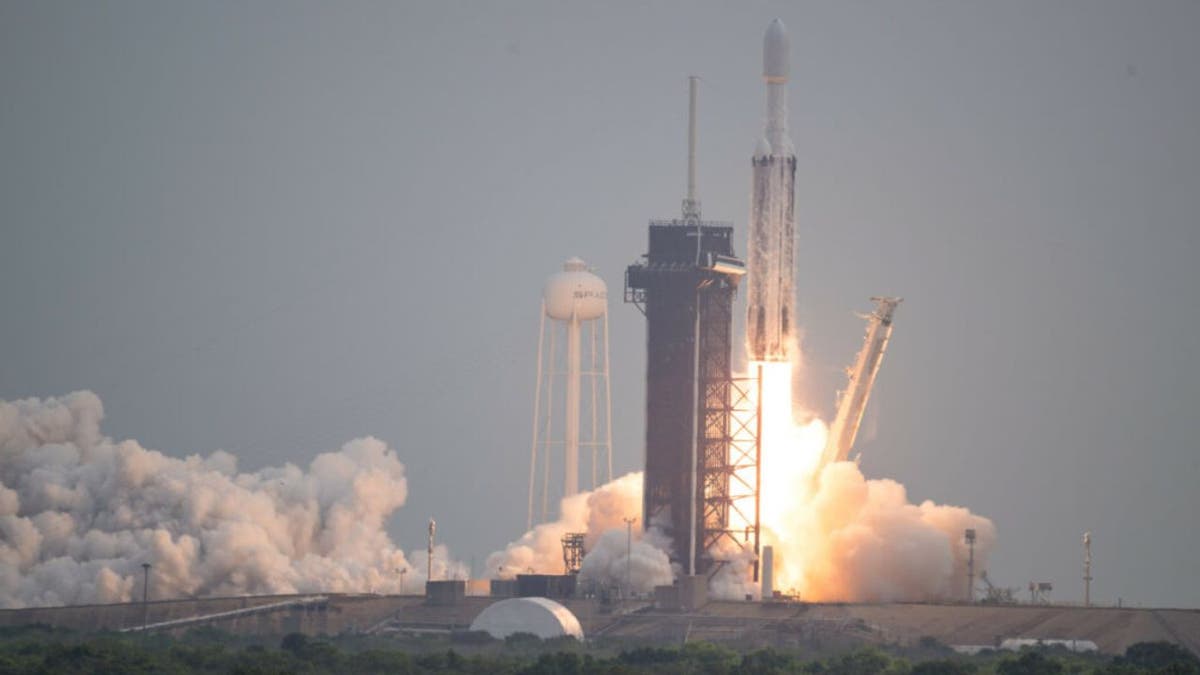How astronauts on the ISS are tackling the latest ‘unexpected challenges’
Coolant leaks, space debris collisions and unplanned engine thrusts are just some of the unexpected challenges astronauts aboard the International Space Station must overcome.
NASA hit a historic milestone after successfully streaming a high-definition cat video from deep space using laser communications for the first time.
NASA’s Deep Space Optical Communications (DSOC) experiment is an ongoing effort to expand communications bandwidth in space. The Dec. 11 demonstration clocked a new record after streaming an ultra-high definition video from 19 million miles away, according to NASA. The demo transmitted a 15-second, high-definition video showing an orange tabby cat named Taters chasing a faint red dot from a laser pointer as it moves quickly across a couch.
"This accomplishment underscores our commitment to advancing optical communications as a key element to meeting our future data transmission needs," NASA Deputy Administrator Pam Melroy said in a press release. "Increasing our bandwidth is essential to achieving our future exploration and science goals, and we look forward to the continued advancement of this technology and the transformation of how we communicate during future interplanetary missions."
The laser communications experiment launched on Oct. 13 alongside NASA's Psyche mission, a six-year journey orbiting the sun between Mars and Jupiter to discover one of the rarest types of asteroids in the solar system. The technology demo was "designed to transmit data from deep space at rates 10 to 100 times greater than the state-of-the-art radio frequency systems used by deep space missions today," according to NASA.
HOW ASTRONAUTS ON THE ISS ARE TACKLING THE LATEST ‘UNEXPECTED CHALLENGES’ MILES ABOVE THE EARTH

A SpaceX Falcon Heavy rocket with the Psyche spacecraft onboard launches on Friday, Oct. 13, 2023, from Launch Complex 39A at NASA’s Kennedy Space Center in Florida. (NASA/Aubrey Gemignani)
The DSOC team, in collaboration with the creators at NASA's Jet Propulsion Laboratory's DesignLab, created the cat video to capture "the essence of the demo as part of the Psyche mission," NASA said. The video was inspired by Felix the Cat, which was "featured in some of the first television test broadcast transmissions", according to NASA.
The video included information about the laser's data bit rate and cat's heart rate. It also displayed graphics of the mission's orbital path and the Palomar telescope dome.
The 15-second video took 101 seconds to reach Earth from deep space using an instrument called the flight laser transceiver. It was sent at the system's maximum bit rate of 267 megabits per second, according to NASA.
THE GALACTIC DISCOVERY THAT WAS MADE AFTER JAMES WEBB TELESCOPE CAPTURED THIS STUNNING IMAGE
"Despite transmitting from millions of miles away, the [flight laser transceiver] was able to send the video faster than most broadband internet connections," Ryan Rogalin, the project’s receiver electronics lead at JPL, said. "In fact, after receiving the video at Palomar, [each frame of the cat video] was sent to JPL over the internet, and that connection was slower than the signal coming from deep space."

The ultra high-definition cat video that streamed 19 million miles away marked a historic milestone for NASA. The cat video was inspired by Felix the Cat, which was featured in some of the first television broadcasts. (Left: Getty Images / Right: NASA/JPL-Caltech)
The latest historic milestone followed the demo on Nov. 14, which NASA described as achieving "first light." It was the first time data was sent and received through laser communications to and from far beyond the moon, NASA said. The experiment has only advanced since, demonstrating faster data downlink speeds and increasing pointing accuracy weekly, according to NASA.
CLICK HERE TO GET THE FOX NEWS APP
The experiment's team downloaded 1.3 terabits of data on the night of Dec. 4, according to NASA. In contrast, NASA’s Magellan mission between 1990 and 1994 downloaded a total of 1.2 terabits during the mission's entirety.
"Now, with the help of our Psyche colleagues, we are getting used to working with the system and can lock onto the spacecraft and ground terminals for longer than we could previously," Rogalin said. "We are learning something new during each checkout."


